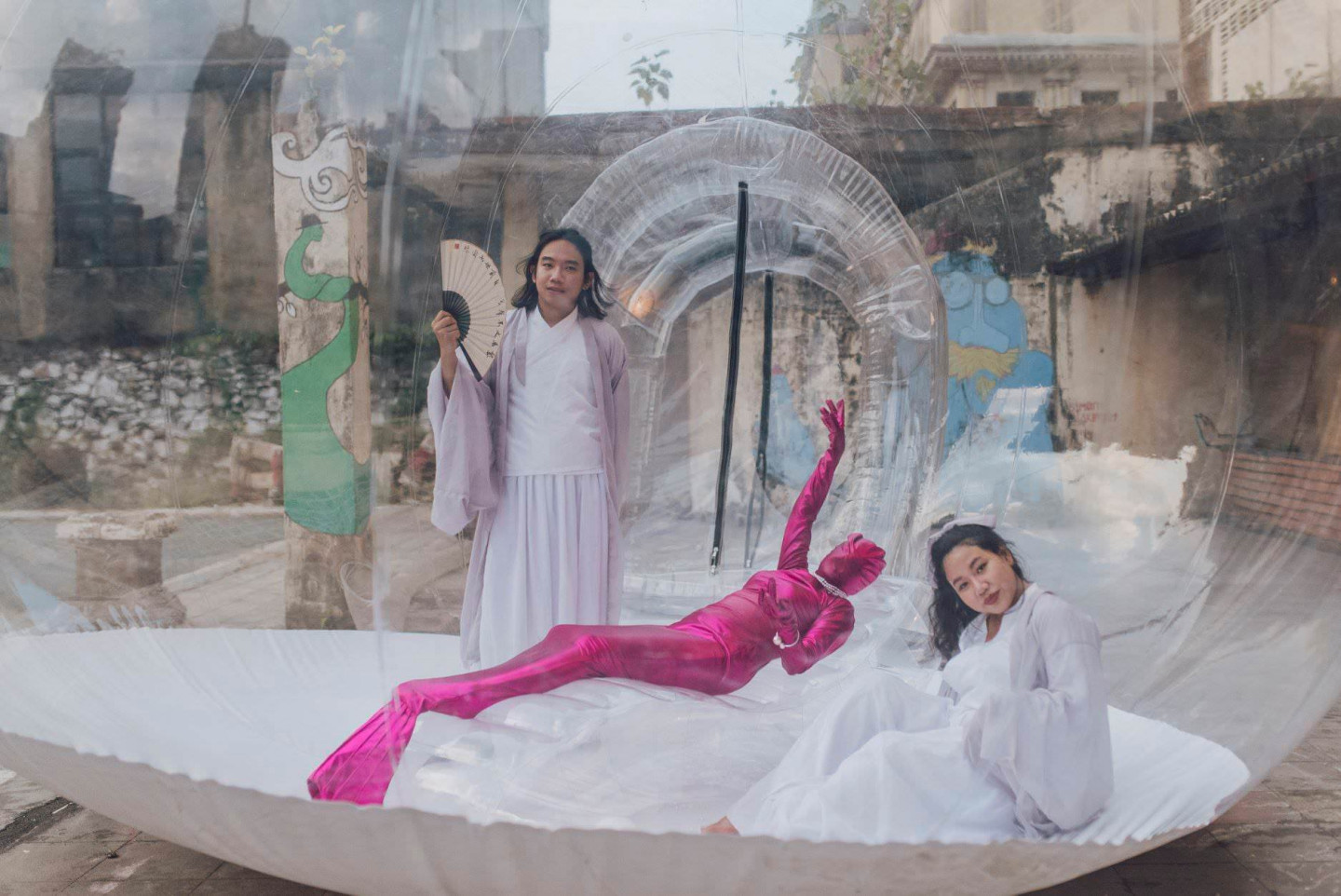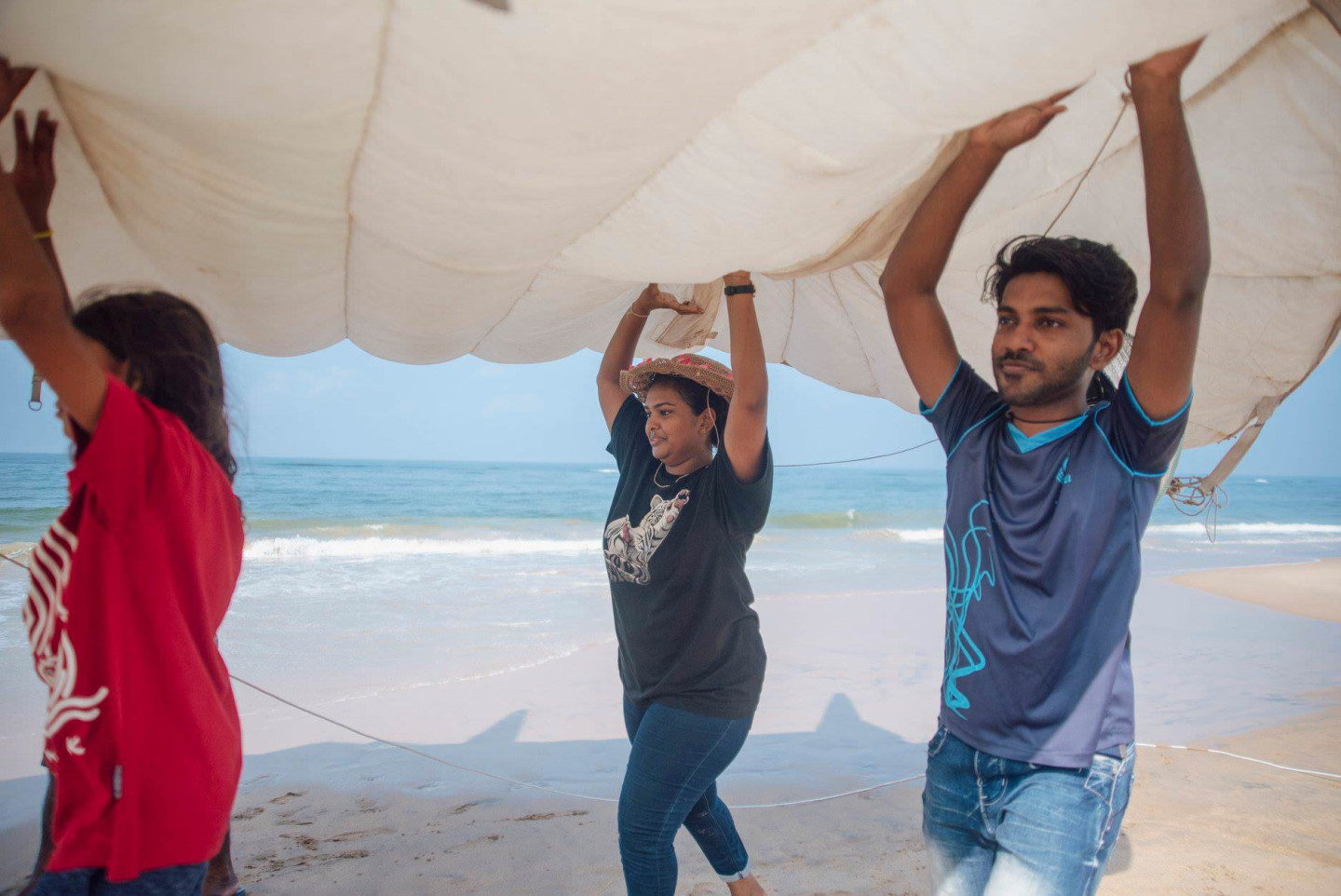In January 2019 EUNIC realised the 6th edition of the yearly festival 'Colomboscope', giving a platform for Sri Lankan, South Asian, and international artists. Accompanied by workshops, artists talks and guided tours, it is the only festival for interdisciplinary contemporary art on the island. Here in an interview cluster president and EUNIC coordinator of the project, Francis Cappe, talks about the contemporary art production in Sri Lanka, urban and environmental challenges, reconciliation, and the future of the festival and its partnership with EUNIC.
The title of the 2019 festival is “Sea Change”, what is it all about?
The festival is reflecting on recent societal topics. It reflects on environmental changes and the challenges that arise from it. Sri Lanka as an island is sensitive to any changes of the sea, especially where pollution is concerned. It is about the life cycle, the impact of tourism and the fragility of the system. But it is also on internal topics; the festival is exploring the ocean as a source of pleasure and of melancholia at the same time.
I quote the curator: “SEA CHANGE addresses the urgencies of a rapidly altering coastline and the complex negotiations to be carried forward between islander communities, unfulfilled agendas of planetary coexistence, and capitalist ambition.”
This is the 6thedition of the festival. How has it evolved over the years?
In 2013 the festival was created as platform for contemporary art and dialogue between disciplines. What is great is that ‘Colomboscope’ has always been supported by EUNIC and each year the festival has taken place in different locations and historic places around the city. For instance, this year it took place in a place called Rio Complex, an abandoned complex of different buildings, including an old cinema and hotel. The place looks a little bit like a ruin. It was a really perfect venue for festival, with plenty of space for the artists making it a very beautiful place. Previously the festival was sponsored by a big Sri Lankan private business called Cinnamon, but this year a local team called Festival Workstook over. They commissioned an international renowned curator, Natasha Ginwala, to organise the event. It has been a big success and all the different forms of art have really been very appreciated by the audience.
What is the future of the festival? Will the Sri Lankan organisational team become the official leaders of the festival in the long run as it was indicated in a project proposal we read?
It has always been part of the plan that the local organisers would take over the festival. The festival is about sustainability. The idea was to have local artists meet with international artists from south Asia and Indian Ocean and it has been a very good chemistry between the artists and a fruitful exchange and as a result of this they have organised a couple of projects together. When it comes to the organisation, this should be done by local experts, we felt. So, from the very beginning from the side of EUNIC the idea was to let a local team take over the festival. It was all about capacity-building. And with this year’s edition we have advanced towards this aim but there is still a way to go.
How did artists work with the different spaces and locations?
The festival locations included a gallery in the city, an old hotel called Grand Oriental Hoteland the wonderful main venue called Rio Cinema. So, in total we had a lot of exhibition and performing space. And because we were using the old hotel in the Rio Complex, there were all these hotel rooms that were used as exhibition cells for each artist. An example of how the exhibition space has been used, is the artist collective called The Many Headed Hydra. Their work was shown on the last floor of the Rio Hotel and it was a beautiful way of showcasing. The artists were going outside the buildings using urban and public spaces. Robin Meier, a Swiss artist, for example, was using the roof of the Rio Hotel for his work called Collective Feeding where he was attracting the birds to come for interactions with the visitors. Jack Beng-Thi, an artist from Reunion Island, was exploring the relation with the sea though a with video installation and moving pictures. The work really captivated you and it was very inviting. He was exploring the theme of the dangers of the sea, especially for people that are refugees.
Can you tell me a little bit more about the contemporary art scene in Sri Lanka and what are the main themes local artist are working on?
Sri Lanka has a very active and contemporary art scene but because it is an island, artists want to get more exposure in other places, outside of the country. A lot of them are trying to take part in the Kochi Biennale in India, which is the largest art exhibition in India and the biggest contemporary art festival in Asia. Themes Sri Lankan artist are working on are the environment and the exploration of the recent history of the country. This is a very strong theme here and everybody wants to promote reconciliation between the different communities in the country, it is a very important theme in the Sri Lankan art.
The festival had a very high media coverage and a lot of visitors. What do you think is the long-term impact of the festival?
I think one impact that the festival has, is that people and especially the locals, are discovering areas of the city that are not considered ordinary places to stroll around. The festival provides an interesting way for locals to discover new and maybe considered the not so attractive areas of their own city. There was a huge variety of art forms from local and international artists throughout the city and whilst creating a good atmosphere, it was showcasing all the different artistic creations. People are looking forward to the next edition of the festival. I also think that you can make abandoned areas of a city more liveable for their inhabitants.
*For more than two years, Francis Cappe has been the director of the Alliance française in Colombo. Before he worked in France, Australia and Canada. The EUNIC Cluster in Sri Lanka is formed by Alliance française, the Goethe-Institut and the British Council. Francis is currently the president of the cluster in Sri Lanka and has acted as the EUNIC coordinator for the art festival COLOMBOSCOPE.


